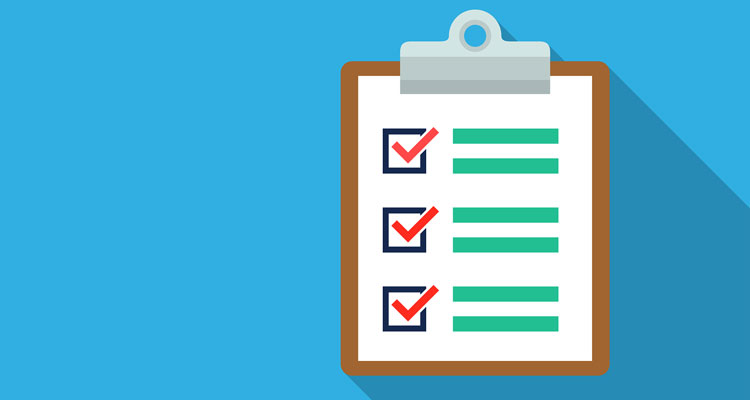Creating content for your target audiences doesn’t end after they become a customer. These new users need some help to ensure they adopt your solution and remain active. The best thing you can do is develop a streamlined onboarding process that resonates with and guides your new customers to adopt. In this customer onboarding guide, we’ll dig into the various roles that content can play in this process and provide a handy checklist to ensure your bases are covered!
What Exactly Is Onboarding?
Before we dive into the customer onboarding guide, it’s a good idea to define what it is and how to you factor onboarding-specific content into your content plans.
Onboarding describes a process that nurtures new users into adoption of your product or service. It welcomes them to your solution and gets them comfortable in using it. It can include multiple components, such as tutorials, support channels, knowledge bases, and milestone events to celebrate a customer’s success.
Why Does Customer Onboarding Matter?
Closing the sale isn’t the end of the customer journey. In fact, it’s the beginning of a new path where they adopt your solution. When you onboard strategically, you have a much better chance of keeping those customers, too. You’re probably aware that customer retention is kind of important and happy customers will net you more revenue and possibly referrals.
Here are some stats around customer onboarding that demonstrate its importance:
- 90 percent of customers believe companies could “do better” when it comes to onboarding.
- 55 percent of people returned a product because they didn’t understand how to use it.
- 70 percent of customers want to know how to use solutions in the buying process and say it impacts their purchase decisions.
You have an opportunity to win over new customers from the first experience when you invest in onboarding programs. But what should such a process look like?
Creating a Customer Onboarding Strategy
Developing a strategy for customer onboarding is critical for your organization. The ultimate process you devise may include a variety of different customer touchpoints, both physical and content-centered. On the content side of the coin, it should be part of your content strategy so that the process is streamlined and in line with all your other content.
First, you’ll want to define your objectives, which will likely include:
- Getting users to implement your product
- Ensuring they adopt the solution and show regular usage
- Making sure that users know the full potential of the product
- Answering any questions as quickly as possible in the content formats that customers want
The Checklist for Customer Onboarding
Once you have your goals in place, it’s time to go step by step through the process.
Say Hello
The welcome email is often the first piece of content the new customer will consume. It should include several key areas:
- Appreciation for choosing your company
- Showing excitement about all they’ll be able to do with your solution
- Directing them to the resources available for onboarding
- Including support or customer service contact information
Now, you may have more than one welcome email. If you have multiple products, you’ll want a unique one for each. Also, consider how the customer became as such. For those that sign-up immediately, that shows intent to scale up fast. Others that took longer may need a steadier approach.
Greeting Inside the Solution
In many cases of onboarding, we’re talking about software products or apps. The first time a new user logs in, you should include a greeting that gives them a rundown of where things are and how to set up their account. Break down features into single tasks to not overwhelm them.
Referencing your content strategy here is important as specific aspects like voice and tone, when used consistently, help to reinforce a consistent experience throughout their journey.
The Step-by-Step Product Set-Up
Next, it’s time to introduce users to how-to content, which you’ll likely provide in multiple formats such as video and text. Remember that people learn differently, so it’s good to have variety. You can, by looking at your content analytics, determine which formats are most popular. They may inform how you create new content.
A good tip to make this content resonate is to craft it from the user’s perspective. That’s why a content marketer should create it versus a product marketer or manager. They are often “too close” to the product’s bells and whistles and might not consider how a new customer would experience it.
Highlighting Features
After the initial set-up, a customer is going to have access to lots of features. They may have a general idea about them, which they learned through demos or sales enablement content. However, much of this will be new.
You can use “tip banners” that pop up over features and call attention to what they do and how they can help. For example, your product may have scheduling functions. A helpful message would be, “Use this feature to schedule your jobs and provide visibility to your calendar for all.”
Interactive Walk-Throughs for Impact
For customers to become power users of your solution, they have to understand the value it brings to their day-to-day. There’s no better way to illustrate this than with an interactive walk-through.
It will be somewhat like the feature callouts, except you space them out as the new user completes a task. So, you’ll be helping them understand how to finish that task and what they can do next. It’s a good idea to have a chat function in this space so the customer can quickly ask questions if they get stuck.
Building and Growing a Knowledge Base
A knowledge base is a resource for how to use your products. It can contain FAQs, tutorials, quick tips, and more. You’ll want this to be searchable, so users can find what they need fast. You may also include an online community, wherein users can pose questions and get answers from other customers.
Depending on the size and scope of your offerings, your knowledge base may require just as much of an ongoing content strategy, planning and creative execution effort as your other content properties like a blog or newsroom.
Celebrating Milestones
Making your product fun is also an excellent way to ensure people use it. When your users complete necessary steps like uploading contacts or designing their first email, give them a shoutout, such as a pop-up congratulations or an email that makes them smile.
Boost Adoption and Usage with These Customer Onboarding Tips
Following this onboarding guide, you can strengthen your new customer processes to ensure they adopt and use your offerings well into the future. By ensuring they have content that supports their implementation, they’ll feel more confident about their choice.
Considering how important the customer onboarding process is to many companies’ bottom lines, we highly encourage you to leverage this customer onboarding guide to devise a solid process and develop all the content necessary to support it. Need help managing this process? Luckily, DivvyHQ can help you manage all customer-facing content initiatives, not to mention everything you produce to get the customers in the door. See how it works today with a free trial.

